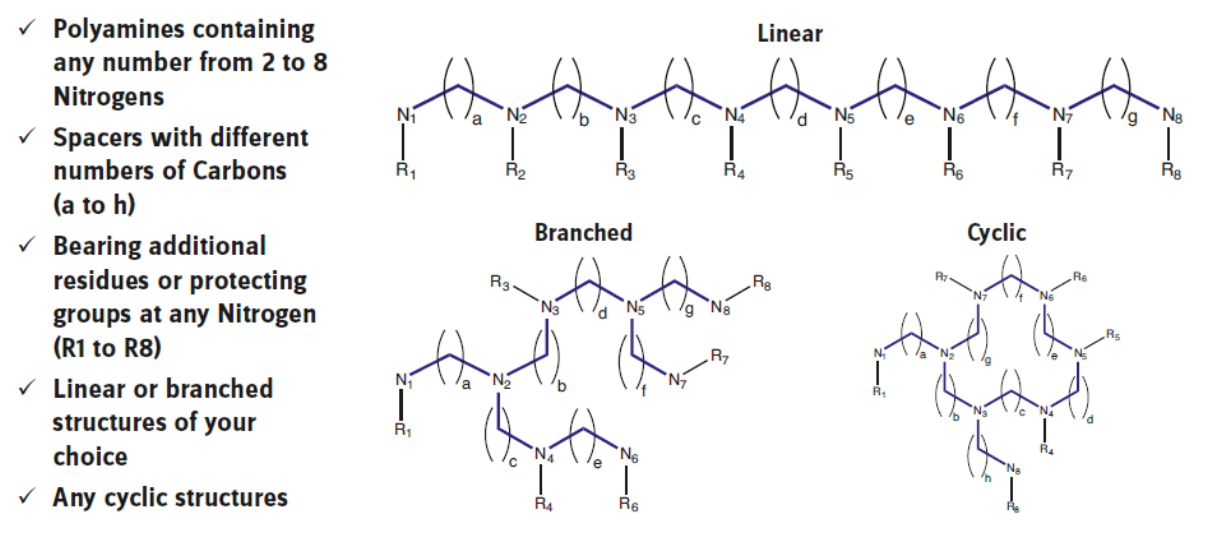Welcome to Iris Biotech
For better service please confirm your country and language we detected.

For better service please confirm your country and language we detected.

Thank you very much for your interest in our products. All prices listed on our website are ex-works, Germany, and may attract customs duties when imported.
You may/will be contacted by the shipping company for additional documentation that may be required by the US Customs for clearance.
We offer you the convenience of buying through a local partner, Peptide Solutions LLC who can import the shipment as well as prepay the customs duties and brokerage on your behalf and provide the convenience of a domestic sale.
Continue to Iris Biotech GmbHSend request to US distributorPublished on 09/02/2017
Polyamines such as ethylene diamine and its higher homologues are important feedstocks for the chemical industry. Compounds like putrescine, spermidine, and spermine play important roles in both eukaryotic and prokaryotic cells and show many other different biological functions. Most eukaryotic cells have a polyamine transporter system on their cell membrane that facilitates the internalization of exogenous polyamines. This system is highly active in rapidly proliferating cells and is the target of many sophisticated chemotherapeutics currently under development. They also have been found to act as promoters of programmed ribosomal frame shifting during translation. Cells synthesize them via highly regulated pathways. As cations they bind to DNA, and, in structure, they represent compounds with multiple positive charges with well-defined spaced intervals.
We have technology available to custom manufacture any type of Polyamine with the following parameters:

If cellular polyamine synthesis is inhibited, cell growth is stopped or severely retarded. The provision of exogenous polyamines restores the growth of these cells. Polyamines are also important modulators of a variety of ion channels, including NMDA receptors and AMPA receptors. They block inward-rectifier potassium channels, thereby conserving the cellular energy, i.e. K+ ion gradient across the cell membrane. In addition, polyamines participate in initiating the expression of SOS response of Colicin E7 operon and down-regulate proteins that are essential for colicin E7 uptake, thus conferring a survival advantage on colicin-producing E. coli under stress conditions. Polyamines also can enhance the permeability of the blood–brain barrier and they are involved in modulating senescence of organs in plants and are therefore considered as a plant hormone.